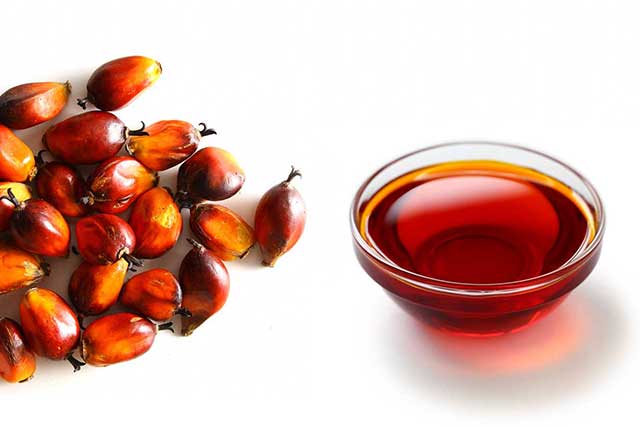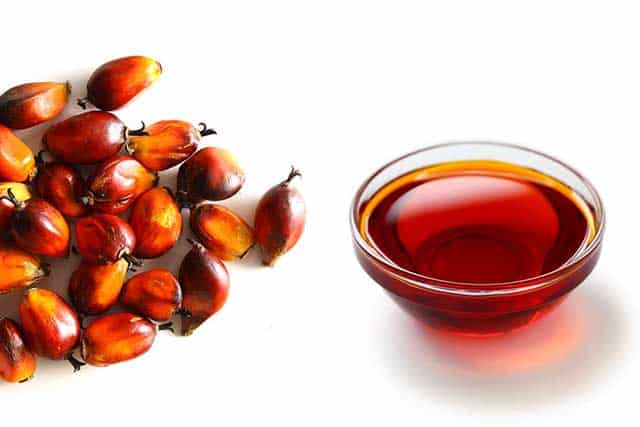Red palm oil has been shown to be good for many things. It is high in antioxidants, which can help protect the body against damage from free radicals. It also contains a variety of vitamins and minerals, including vitamin A, which is important for vision and skin health.
Additionally, red palm oil can help improve cholesterol levels and boost heart health.
Red palm oil is good for a lot of things. It’s an excellent source of Vitamin E, which is great for your skin and hair. It’s also high in antioxidants, which can help protect your cells from damage.
Additionally, red palm oil can help improve heart health by reducing cholesterol levels and inflammation.
What is Red Palm Oil Used for
Red palm oil is used for a variety of purposes, including cooking, cosmetics, and biofuels. It is also used in traditional medicine.
Cooking: Red palm oil has a high smoke point and is therefore often used for frying foods.
It has a nutty flavor that some people enjoy.
Cosmetics: Red palm oil is sometimes used in cosmetics, as it can help to moisturize the skin.
Biofuels: Due to its high fatty acid content, red palm oil can be used to produce biodiesel.
This fuel is thought to be more environmentally friendly than regular diesel fuel.
Traditional medicine: In some cultures, red palm oil is used to treat various medical conditions. For example, it may be applied to the skin to relieve pain or inflammation.

Credit: www.nutritionadvance.com
What are the Benefits of Red Palm Oil?
Red palm oil is a type of vegetable oil that is derived from the reddish pulp of the fruit of the oil palm tree. It is rich in antioxidants, carotenes, and tocotrienols, making it an extremely healthy cooking oil. Here are some of the benefits of red palm oil:
1. Red palm oil is packed with nutrients. It is a great source of Vitamins A and E, as well as carotenes and tocotrienols (a type of Vitamin E). These nutrients are known for their antioxidant properties, which help protect the body against free radical damage.
2. Red palm oil can help improve heart health. The beta-carotene and tocotrienols present in this cooking oil can help lower bad cholesterol levels and keep blood vessels healthy. Additionally, these nutrients can also help prevent strokes.
3. Red palm oil can boost immunity. The beta-carotene content in this natural cooking oil helps fortify the immune system, making it more resistant to infection and disease.
4. Red palm oil aids in weight loss efforts.
Despite being high in calories, this natural fat actually helps promote weight loss by increasing energy expenditure and improving metabolism.
What are the Side Effects of Red Palm Oil?
Red palm oil is an edible oil that is extracted from the fruit of the Elaeis guineensis tree. It has a reddish color due to its high carotene content and is often used as a cooking oil in many parts of Africa.
Like all oils, red palm oil contains a high amount of fat and calories.
One tablespoon (15 ml) contains 120 calories and 14 grams of fat, most of which are saturated fats.
While there are no known side effects associated with eating red palm oil, it is important to remember that it is still a high-fat food and should be consumed in moderation. When used excessively, it can lead to weight gain and other health problems such as heart disease.
What Does Palm Oil Do to Your Body?
Palm oil is a vegetable oil that is extracted from the fruit of the African oil palm tree. It is one of the most widely used oils in the world, and is found in a variety of food products, cosmetics, and cleaning products.
So what does palm oil do to your body?
For starters, palm oil is high in saturated fats. These types of fats can increase your LDL (bad) cholesterol levels and contribute to heart disease. Additionally, palm oil contains a significant amount of vitamin A and beta-carotene.
While these nutrients are important for vision and immune function, they can be toxic at high levels. Large doses of vitamin A can cause liver damage, birth defects, and bone problems. Beta-carotene supplements have also been linked to an increased risk of lung cancer in smokers.
Palm oil is also a major source of deforestation in tropical countries like Indonesia and Malaysia. The expansion of palm oil plantations has led to the destruction of rainforests and the displacement of indigenous people. This has devastating consequences for the environment and local communities.
So there you have it – some potential risks associated with consuming palm oil. As with any food product, it’s important to moderation when it comes to consumption. Speak with a registered dietitian or doctor if you have any concerns about including palm oil in your diet.
Can You Eat Red Palm Oil?
Yes, you can eat red palm oil. This type of palm oil is extracted from the fleshy part of the fruit of the African oil palm tree. It’s rich in antioxidants and vitamins A and E, and it has a nutty flavor that makes it a popular ingredient in many cuisines.
Red palm oil can be used for cooking or added to foods as a condiment.
Palm Oil – Health & Nutrition
Conclusion
Is it Healthy
Red palm oil has been shown to be beneficial for heart health, as it contains high levels of vitamin E and beta-carotene. Additionally, red palm oil may help improve cognitive function and reduce the risk of Alzheimer’s disease.
Red palm oil is also a good source of CoQ10, which is important for energy production in the body.

